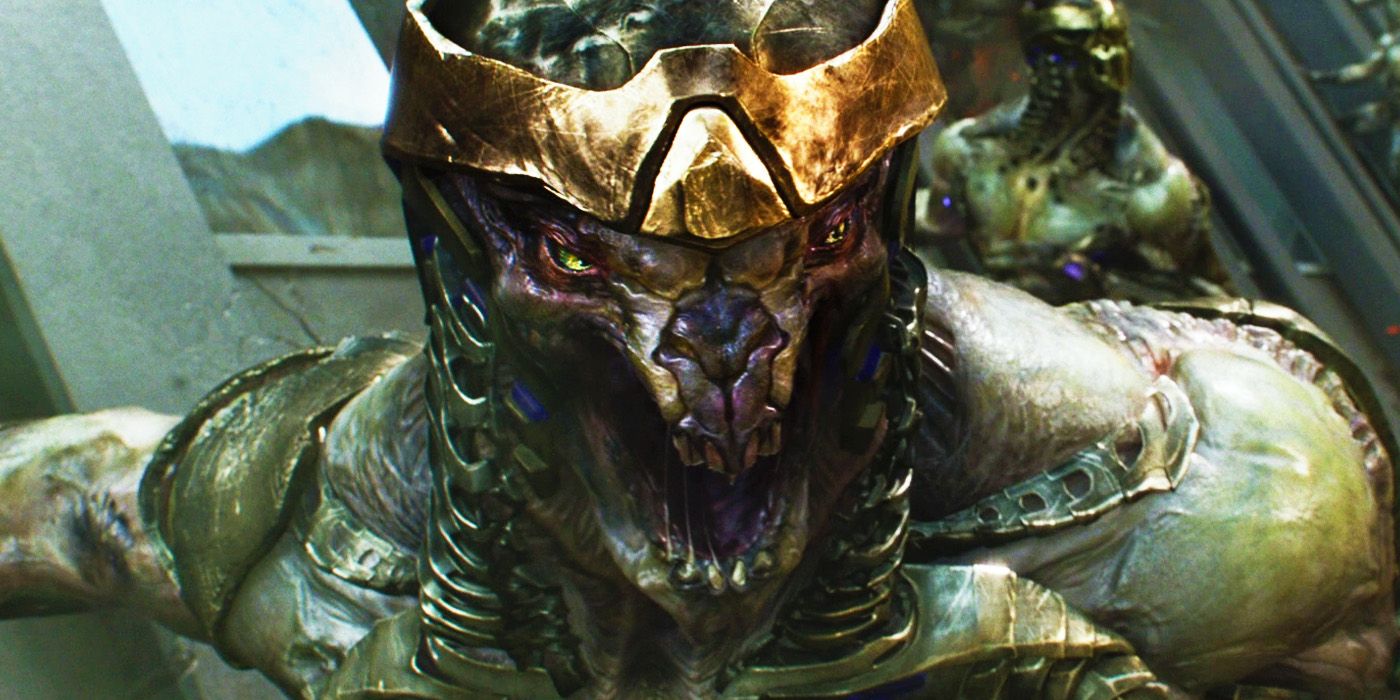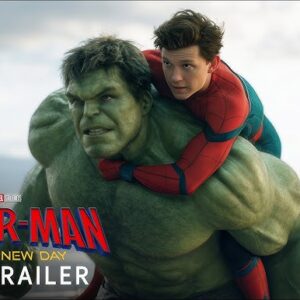Earth is a dangerous place to live in the Marvel Cinematic Universe, as made evident by the multiple invasions and depicted takeovers shown on-screen.

The MCU has never been short on spectacle, and several of Marvel’s movies have included massive invasions of Earth. Though earlier movies in the MCU timeline kept the stakes slightly smaller and more personal, The Avengers blew the door open for putting the planet in peril. While terrestrial threats remain numerous and deadly, the MCU is also filled with invaders looking to conquer or destroy the planet for one reason or another.
Equally interesting is that the MCU has done an admirable job filling in Earth’s history with past conflicts. From the Eternals arriving to stop the Deviants thousands of years ago to the Frost Giant’s attempted subjugation of Midgard, Marvel Studios isn’t afraid to look to the past to build the future. Of course, there’s not time like the present, and the MCU will perhaps forver be defined by the efforts of Thanos to invade Earth for the Infinity Stones.
7. The Deviants Emerge & The Eternals Arrive
5000 BCE

The oldest known invasion in the MCU is also the least traditional interpretation of the term. Eternals may be one of the more divisive MCU movies, but it went to unprecedented lengths to recontextualize Earth’s distant past and raison d’être. While Earth it self wasn’t formed to host the birth of a new Celestial, Tiamut was planted there early in the planet’s life. However, it was also invaded by the Deviants, beings designed to remove natural predators of intelligent life but instead becoming predators themselves.
The Eternals believe they are warriors sent to subdue Devients and help life on Earth flourish in the name of good. In reality, the Celestials need life to fuel the birth of their own kind deep within the planet’s core. As is teased in Eternals, this birth results in the destruction of the host planet.
The Eternals are sent to quell the Deviants and integrate themselves into the formative years of the human race, protecting them and occasionally aiding in technological advancement. As such, their arrival is an “invasion” as well, even if it’s a peaceful one to help instead of hinder. While there were assumedly other partial invasions in the centuries that follow, the next one disclosed in the MCU doesn’t happen for almost 6000 years.
6. The Frost Giants Want Another Midgard Ice Age
965 AD

The MCU’s Thor franchise has several great villains, but there’s little doubt the Frost Giants are left quite one-dimensional. They only play a role in the first Thor movie, in which they’re rarely more than fodder for Thor to fight through. However, the official MCU timeline dates and explains their early invasion of Earth.
Though he usualloy appears Asgardian, Loki is a Frost Giant who was taken away as a baby by Odin.
Given the Frost Giants and their leader, Laufey, hail from the frozen land of Jotunheim, it makes sense that their nefarious plan involved invading Earth (arriving in Tønsberg, Norway) and attempting to bring about a second major Ice Age with the mystical Casket of Ancient Winters. Odin and the Asgardians stop the Jotuns, partially inspiring the roots of Norse mythology in the process.
5. The Kree/Skrull War Leads To An Unexpected Skrull Population
1995 AD To Present

The Kree/Skrull was is a long-running and sprawlign conflict in both the MCU and Marvel Comics, and it does lead to the infiltration of Earth’s leadership and general population by the latter. Though Captain Marvel flipped the usual Marvel script and made Skrulls relatively innocent refugees simply looking for a home and safely, things get more complicated in Secret Invasion.
Though Secret Invasion is widely considered a misfire, it does reveal the incredibly success Skrulls have found infiltrating Earth. While Fury is away of some who have been working with him since the 1990s, Talos reveals that there are fact, over a million. Moreover, some, like Gravik and his supporters, try to take control of Earth via espionage and force. The cell is eventually stopped, but with an undisclosed number of Skrulls still around, another bout of violence could happen at any time.
4. Loki Leads The Chitauri In The Battle Of New York
2012 AD

The massive Chitauri invasion led by Loki is the climactic conflict in The Avengers, and it’s the most classic example of the conflict the MCU had depicted to date on release. The Avengers was a bold move, bringing together so many individual heroes on screen and in live action for the first time. As such, it makes sense that a more black and white “baddie invasion story” was chosen as the connective tissue.
Fresh off his humiliation in Thor, Loki partners with Thanos to lead a massive alien army through a portal in NYC to conquer it and, in the process, the Infinity Stone that resides there. Fortunately, the Avengers are able to but aside their squabbles and beat back the invading forces. Not only is the third-act battle visually stunning, but it set the foundation for Loki’s eventual hero turn and for Thanos’ intruction in full later in the franchise.
3. The Dark Elves Set Sights On Earth
2013 AD

There’s no doubt that the MCU botched Malekith, a talented sorcerer and combatant and one of Thor’s most famous adversaries in Marvel Comics. However, while the Dark Elf ended up a bit bland on screen, he did put forth a close-to-succesful invasion of Midgard (Earth). This time, instead of NYC, the sequence is centered on London and Greenwich (but the magic of portals means the battle is quite sprawling).
Malekith’s goal is to take advantage of the Aether (unknown at the time to be the powerful Reality Gem) and the rare alignment of the Nine Realms to plunge the universe back into primoridal darkness. Of course, the invasion doesn’t come to pass, and Thor (with the help of Jane and his other human friends) return the realms to order. The battle itself isn’t generally well-remembered as lasting effects were minimal, but it’s still a visually interesting sequence in the MCU’s earlier years.
2. Thanos And The Black Order Invade
2018 AD

Infinity War began the climax to the MCU’s unprecedented years of world building, and it was accompanied by the biggest and most exciting invasion sequence to date. Though Thanos starts the movie with some Infinity Stones, the heroes of the MCU are able to mount a final standoff in Wakanda to attempt to protect the Soul Stone (nested in Vision’s head). Thanos’ massive army clashes with heroes from every corner of the MCU, resulting in a battle that’s equal parts eye candy and emotional resonance.
Given the nature of cinematic universes having multiple moving parts and creative teams, it’s rare for one movie’s climax to have true, long-lasting effects. However, there’s little doubt that Infinity War‘s shocking end – which saw Thanos win and wipe out half of all life in the universe – wasn’t a game-changer. The effects of The Blip, as it’s called in-universe- are still being felt, rippling through Earth’s socie-political climate and the confidence/memories of the present heroes.
1. Thanos From The Past Attacks The Earth In The Present
2023 AD

After the raw spectacle of Infinity War‘s final battle (and the incredible ending), Endgame had quite the tall task of delivering a finale that lives up to its predecessor. However, it completely succeeded. The Avengers, traveling through time to collect the Infinity Stones after their destruction by Thanos following his Snap, Thanos from the past catches wind and follows them into the present. What follows is an all-out assault on the Avengers’ complex in upstate New York.
While Thanos in Infinity War simply uses violence when necessary as a means to an end, Endgame Thanos is dedicated to complete destruction. Just as he seems poised to succeed and take control of Earth, the iconic “portal scene” sees the MCU’s previously-snapped heroes enter the battle from across the universe. It’s a true capstone to an era of the MCU that, time has proven, is more difficult to reacpture than anticipated.





